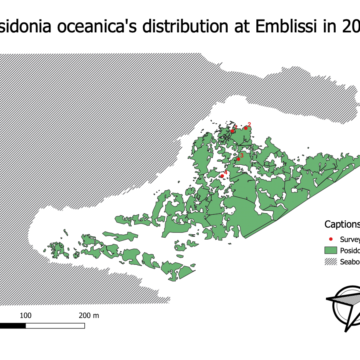
Posidonia oceanica, also known as Neptune grass, exists only in the Mediterranean.
This ancient plant plays one of the most important roles in the local fragile ecosystem. Not only does it absorb 15 times more carbon dioxide every year than a similar sized piece of the Amazon rainforest, but it also produces vast amounts of oxygen. Also, it is a crucial habitat for countless species and it protects our beloved sandy coastlines from erosion.
For all of these reasons this plant must be protected at all costs.
Unfortunately, Posidonia meadows have regressed by 34% in the past fifty years, and the rate of decline is higher than the rate of re-growing.
It is important to raise awareness on the best practices to avoid further damage. Such is the task taken on by NGOs such as Kosamare, our partners in Greece.
In order to better understand its yearly evolution, the Octopus Foundation has deployed its aerial drones since 2017 to produce precise mappings (or photogrammetry) of coves on the Northern part of the island of Kefalonia, in the Ionian Sea.

Once the drone is up in the air, it takes many pictures of the study area, from different heights and angles. Once back at the office, the photos are fed to a powerful software designed to reorganize them in space to recreate the environment in 3D in a process called photogrammetry.
Year after year, these documents can be studied in order to monitor the evolution of the Posidonia meadows.
More information can be found on Kosamare’s website.








